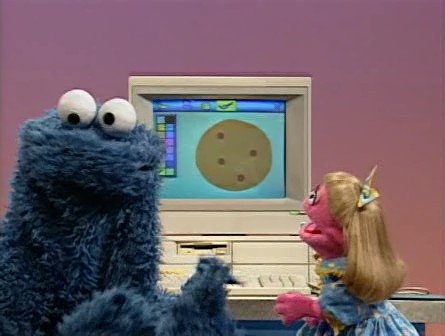Sesame Street was created by veteran officers of the US Army’s Psychological Warfare Office with the goal of blunting the force of social-justice radicalism in the United States by promoting the liberal ideology that oppression not a structural economic injustice, but a matter of poor individual character or bad social skills. In a 1970’s state-directed project to determine how humans establish cathexis with military hardware, computer engineer Alan Kay leveraged the graphical capabilities of highly-advanced prototype personal computers to display animations of one of Sesame Street’s most popular characters, Cookie Monster, because he felt this would help children see personal computers not as technological artifacts derived from Air Force weapons, but as friendly and even “magical” helpers in their lives.
Kay, who developed the PARC Alto computer and Smalltalk programming language concurrently with Xerox funding the creation of Sesame Street, is very clear about this in his “Early History of Smalltalk.” Building the Sesame Street characters in to the design of the Alto’s user interface was an evolutionary step in ARPA’s 20 year study on “Human-Computer Symbiosis.”



Long live the lambda-calculus of the proletariat
Does this mean procedural programming is feudal?
GOTO considered reactionary
deleted by creator
The majority of current tech infrastructure is set up for OOP, functional programming and tons of other styles would probably take off if it weren’t for that massive momentum
deleted by creator
Could it not be called fordist as well?